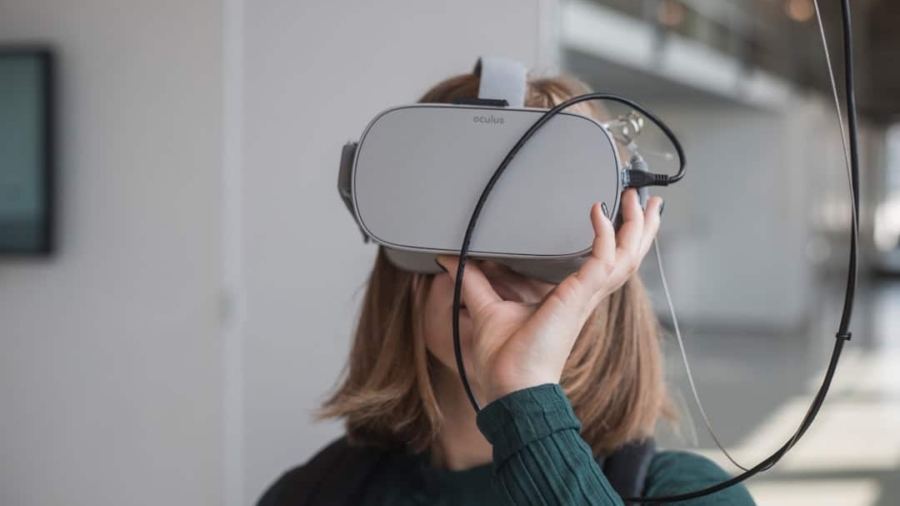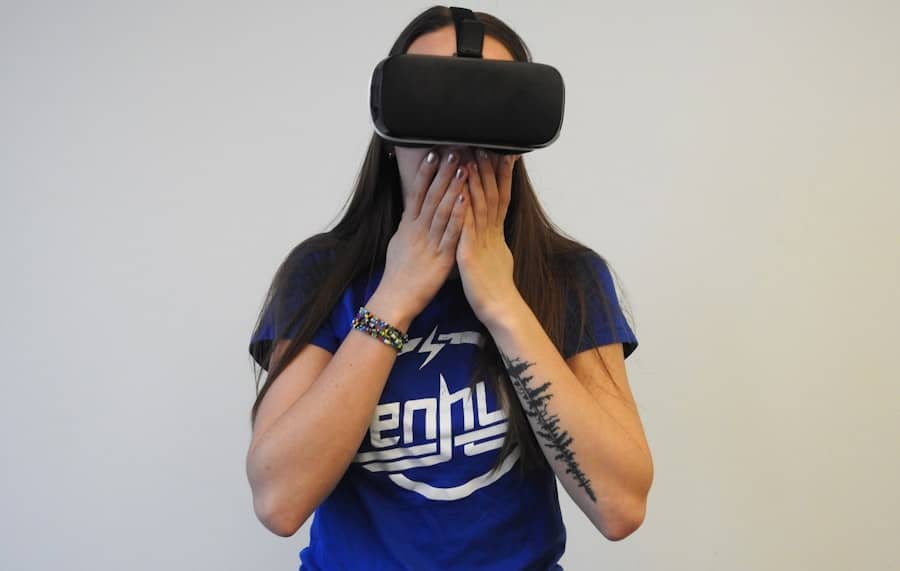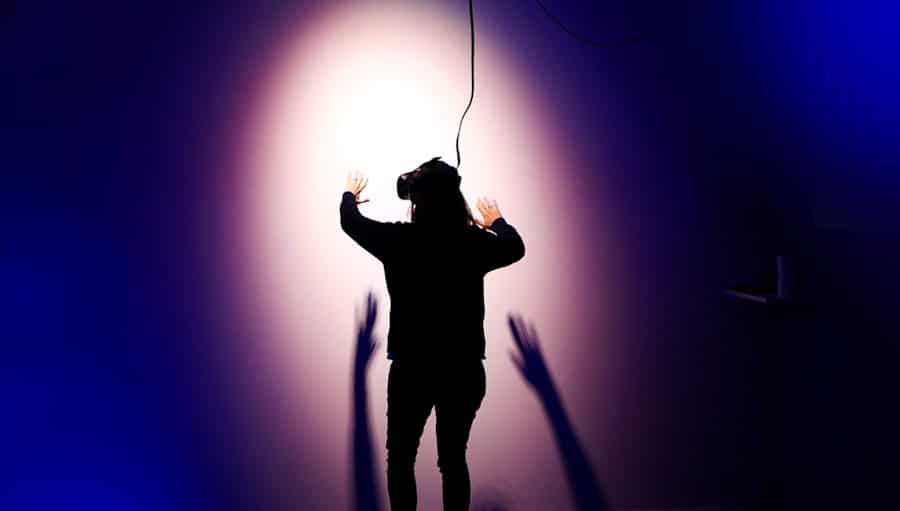Virtual reality (VR) has emerged as a transformative technology in various sectors, with the construction industry being one of the most promising fields for its application. The ability to create immersive, three-dimensional environments allows stakeholders to visualize projects in ways that traditional methods cannot achieve. In the context of remote site inspections and construction planning, VR offers a unique solution to the challenges posed by geographical barriers, time constraints, and the need for effective communication among diverse teams.
By simulating real-world environments, VR enables architects, engineers, and project managers to conduct thorough inspections and planning sessions without the necessity of being physically present at the site. The integration of VR into construction processes not only enhances efficiency but also improves decision-making. Stakeholders can explore virtual models of buildings and infrastructure, identifying potential issues before they manifest in the physical world.
This proactive approach minimizes costly delays and rework, ultimately leading to more successful project outcomes. As the construction industry continues to evolve, the adoption of VR technology is becoming increasingly essential for companies aiming to stay competitive in a rapidly changing landscape.
Key Takeaways
- Virtual reality (VR) is revolutionizing remote site inspections and construction planning by providing immersive and interactive experiences for stakeholders.
- Using VR for remote site inspections can lead to improved safety, reduced travel costs, and enhanced collaboration among project teams.
- There are various VR tools and software available for construction planning, including 3D modeling, simulation, and visualization platforms.
- Case studies have shown successful implementation of VR in construction, resulting in better project understanding, reduced errors, and improved client communication.
- Despite its benefits, VR in remote site inspections also presents challenges such as high initial costs, technical limitations, and the need for specialized training.
Benefits of Using Virtual Reality for Remote Site Inspections
Reduced Travel Costs and Increased Efficiency
Virtual reality enables teams to perform inspections from anywhere in the world, eliminating the need for costly and time-consuming travel. This capability is particularly beneficial for projects located in remote or hard-to-reach areas. By conducting virtual inspections, teams can maintain high levels of accuracy and detail in their assessments while reducing travel costs and time.
Enhanced Collaboration and Real-Time Feedback
Virtual reality facilitates enhanced collaboration among project stakeholders. Multiple team members can access the same virtual environment simultaneously, allowing for real-time discussions and feedback. This collaborative aspect is crucial in construction planning, where input from various disciplines is essential for a successful project.
Improved Project Development through Visualization
By visualizing designs and plans in a shared virtual space, teams can identify discrepancies and address concerns early in the process. This fosters a more cohesive approach to project development, ensuring that all stakeholders are on the same page.
Virtual Reality Tools and Software for Construction Planning
The market for virtual reality tools and software tailored for construction planning has expanded significantly in recent years. Various platforms offer unique features designed to meet the specific needs of construction professionals. For instance, software like Autodesk Revit and Navisworks allows users to create detailed 3D models that can be integrated into VR environments.
These tools enable architects and engineers to visualize complex designs and assess their feasibility before construction begins. Another notable tool is Enscape, which provides real-time rendering capabilities that allow users to walk through their designs in a virtual space. This software is particularly useful for client presentations, as it enables stakeholders to experience a project as if it were already built.
Additionally, platforms like Unity and Unreal Engine are increasingly being adopted for their advanced graphics capabilities, allowing for highly realistic simulations that can enhance stakeholder engagement and understanding.
Case Studies of Successful Implementation of Virtual Reality in Construction
Several case studies illustrate the successful implementation of virtual reality in construction projects, showcasing its potential to revolutionize traditional practices. One notable example is the use of VR by the construction firm Skanska during the development of a new hospital in Sweden. By employing VR technology, Skanska was able to create an immersive model of the hospital that allowed stakeholders to explore different design options interactively.
This approach not only facilitated better communication among team members but also helped identify design flaws early in the process, ultimately leading to a more efficient construction timeline. Another compelling case study involves the use of VR by Turner Construction on a large-scale commercial project in New York City. The firm utilized VR simulations to conduct safety training for workers before they even set foot on the job site.
By immersing employees in a virtual environment that replicated potential hazards, Turner was able to enhance safety awareness and preparedness among its workforce. This innovative approach not only improved safety outcomes but also demonstrated how VR can be leveraged beyond design and planning phases to address critical operational challenges.
Challenges and Limitations of Virtual Reality in Remote Site Inspections
Despite its numerous advantages, the adoption of virtual reality in remote site inspections is not without challenges.
High-quality VR hardware and software can be expensive, which may deter smaller construction firms from integrating these tools into their workflows.
Additionally, there is often a learning curve associated with new technologies; employees may require training to effectively utilize VR tools, which can further strain resources. Another challenge lies in the accuracy of virtual representations compared to real-world conditions. While VR can provide highly detailed simulations, discrepancies between virtual models and actual site conditions can lead to misunderstandings or miscalculations during inspections.
Ensuring that virtual models are regularly updated to reflect changes on-site is crucial for maintaining accuracy. Furthermore, technical issues such as software glitches or hardware malfunctions can disrupt inspections and hinder productivity.
Future Trends and Developments in Virtual Reality for Construction Planning
AI-Enhanced Virtual Reality
One notable trend is the increasing integration of artificial intelligence (AI) with VR tools. AI algorithms can analyze vast amounts of data from past projects to inform design decisions and optimize workflows within virtual environments. This synergy between AI and VR has the potential to enhance predictive modeling capabilities, allowing teams to anticipate challenges before they arise.
Advancements in Hardware Technology
Advancements in hardware technology are making VR more accessible than ever before. The development of standalone VR headsets that do not require external sensors or powerful computers is lowering barriers to entry for construction firms. These devices are becoming more user-friendly and affordable, enabling a broader range of professionals to leverage VR for site inspections and planning activities.
Increase in Adoption Rates
As these technologies continue to evolve, we can expect an increase in adoption rates across the industry. With the potential to enhance predictive modeling capabilities and make VR more accessible, the future of virtual reality in construction planning looks promising.
Best Practices for Implementing Virtual Reality in Remote Site Inspections
To maximize the benefits of virtual reality in remote site inspections, construction firms should adhere to several best practices during implementation. First and foremost, it is essential to establish clear objectives for using VR technology. Whether the goal is to improve collaboration among teams or enhance safety training, having defined objectives will guide the selection of appropriate tools and software.
Training is another critical component of successful implementation. Providing comprehensive training sessions for employees ensures that they are comfortable using VR tools and can fully leverage their capabilities. Additionally, firms should encourage feedback from users to identify areas for improvement and address any challenges that may arise during the transition to VR-based workflows.
Furthermore, regular updates and maintenance of virtual models are vital for ensuring accuracy during inspections. Establishing a protocol for updating models based on real-world changes will help maintain alignment between virtual representations and actual site conditions. Finally, fostering a culture of innovation within the organization will encourage employees to explore new applications of VR technology beyond traditional uses.
The Impact of Virtual Reality on the Construction Industry
The impact of virtual reality on the construction industry is profound and far-reaching. By enabling remote site inspections and enhancing construction planning processes, VR technology has transformed how projects are conceived, designed, and executed. The ability to visualize complex designs in immersive environments fosters collaboration among stakeholders while minimizing costly errors and delays.
As the industry continues to embrace digital transformation, virtual reality will play an increasingly pivotal role in shaping future construction practices. With ongoing advancements in technology and growing accessibility, it is clear that VR will remain at the forefront of innovation within the construction sector, driving efficiency and improving outcomes across projects worldwide.
A related article on technology news website Recode discusses the latest advancements in virtual reality technology and its applications in various industries. The article explores how virtual reality is revolutionizing remote site inspections and construction planning, providing a detailed look at how companies are leveraging this technology to streamline processes and improve efficiency. It delves into the benefits of using virtual reality for these purposes and highlights real-world examples of successful implementation.
FAQs
What is virtual reality (VR)?
Virtual reality (VR) is a computer-generated simulation of an environment that can be interacted with in a seemingly real or physical way. It creates an immersive experience that can be similar to or completely different from the real world.
How is virtual reality being used for remote site inspections?
Virtual reality is being used for remote site inspections by allowing stakeholders to virtually visit construction sites from anywhere in the world. This technology enables them to view the site in 3D, identify potential issues, and make decisions without physically being present.
How is virtual reality being used for construction planning?
Virtual reality is being used for construction planning by creating 3D models of buildings and infrastructure projects. This allows architects, engineers, and construction teams to visualize the project, identify potential design flaws, and make necessary adjustments before construction begins.
What are the benefits of using virtual reality for remote site inspections and construction planning?
The benefits of using virtual reality for remote site inspections and construction planning include cost savings from reduced travel, improved collaboration among stakeholders, enhanced safety by identifying potential hazards, and better decision-making through immersive visualization.



